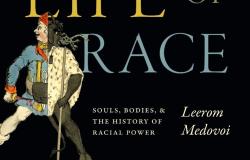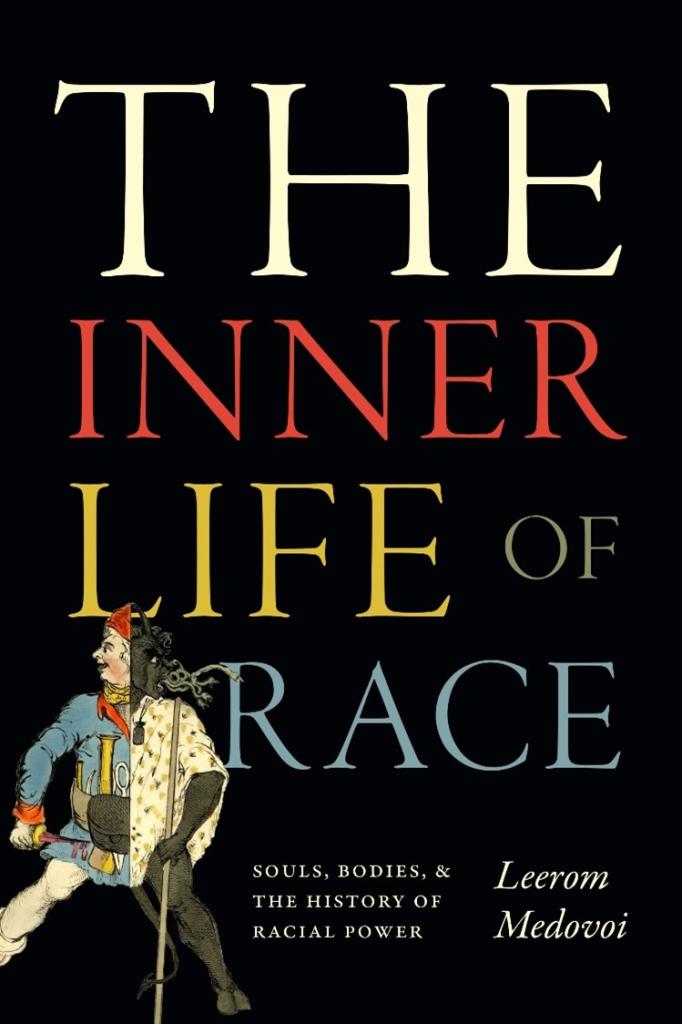Book Review - The Inner Life of Race: Souls, Bodies and the History of Racial Power

The Inner Life of Race: Souls, Bodies and the History of Racial Power by Leerom Medovoi. Durham, NC: Duke University Press, 2024. 279 pp., $104.95 hardcover 978-1-4780-2656-3, $27.95 paperback 978-1-4780-3080-5
Leerom Medovoi casts a critical gaze on the concept of race, and reconstructs it after cleaving it into a “body” and “soul.” Racial body, or what W.E.B. Du Bois famously described as “racism of the color-line” (p.2), is phenotypically visible. Much of the scholarship on race and race relations centers on the embodied concept of race, which depicts it in physiognomy and phenotype that are deployed to otherize the populations. Medovoi, however, argues that all racisms do not run along the color line, and presents two outliers in this regard: Islamophobia and antisemitism, that “can be said to invert the approach to the game of racial power found in the presumptively marked bodies of the color line” (p. 18).
Islamophobes and antisemites police the soul, or what Medovoi also calls inner life, of those who practice Islam and Judaism. Hence, “to “ensoul” a person or a population is to perform a biopolitical calculation that associates them with a certain quantity and quality of threat” (p. 4). The appearances of populations of faiths are often mutable, as they may look like one of “us” or one of “them.” Medovoi analogizes this mutability to “sleeper cells” as deployed in the counterinsurgency lexicon, which racial security regimes use to describe the people of Islamic and Jewish faiths among the national people. Like sleeper cells, a racial security regime polices these populations of faith and their inner lives to keep them from acting out their assumed darker instincts.
The soul, Medovoi argues, is the site of menacing intentions, beliefs and desires that race polices. This is what he conceptualizes as ensoulment, in contradistinction to the embodiment, of race and both, to him, are dialectically linked. Ensoulment is an all-encompassing idea that blurs delimitations between racial majorities and racial minorities, as “the hermeneutics of suspicion” (p. 11) extend to everyone all at once. Medovoi refers to a contemporary analog of the hermeneutics of suspicion in a TSA (transportation security administration) screening at an airport, where everyone goes through the same security protocols. This evinces the universality of the reach of the hermeneutics of suspicion.
The vast jurisdiction of inner life, which results from racial suspicions, yields racial power to police the populations of souls or ensouled populations. To explicate this process, Medovoi enlists Oscar Brown’s song entitled The Snake that he observed having been sung at political rallies. In the song, the snake is a metaphor for populational racism, which unearths dark intentions that the populations of souls are purported to harbor. But in the lyricized parable, a woman who rescues the sick snake and yet gets bitten is a reference to “an America too soft-hearted and prone to seduction” (p.5). The “tender heart of the woman is … a threat,” and so is “a man with a tender heart,” who “may prove to be gay, transgendered or simply “perverse”” (p. 23).
This parable adds to the populations of souls another stratum of a subpopulation that Medovoi calls objects of desire. The moral of this versified story, to Medovoi, is that in the interest of national security, America need not let down its guard against the objects of desire among the populations of souls, to which members of the national people may feel attracted: “Whites who assist escaped slaves, citizens who offer aid to migrants at the border, liberals who are “fellow travelers” with the communist party” (p. 209), who may be regarded as the enemy-camouflaged.
 The Inner Life of Race highlights Medovoi’s two self-professed contributions: the long-arc history of race, and its genealogy. The deep dive into the history and genealogy of race helps him theorize the concept of ensoulment that is foundational to his text. Although ensoulment is a theological concept, Medovoi applies it to the secular concept of populational racism that, nevertheless, has theological underpinnings, especially in the context of Islamophobia and antisemitism. Yet this concept goes a long way to help to understand race in body and race in soul. The latter (ensoulment) demonstrates how racial animus shows up in Islamophobia and antisemitism.
The Inner Life of Race highlights Medovoi’s two self-professed contributions: the long-arc history of race, and its genealogy. The deep dive into the history and genealogy of race helps him theorize the concept of ensoulment that is foundational to his text. Although ensoulment is a theological concept, Medovoi applies it to the secular concept of populational racism that, nevertheless, has theological underpinnings, especially in the context of Islamophobia and antisemitism. Yet this concept goes a long way to help to understand race in body and race in soul. The latter (ensoulment) demonstrates how racial animus shows up in Islamophobia and antisemitism.
Reaching into the intellectual ancestry of the concept of race since the Middle Ages, Medovoi probes the calls for Inquisitions and confessions to combat heresy, infidelity, and the assumed threat that both posed to the souls and their salvation. Race and racialization, to Medovoi, are technologies of power that state- and non-state actors exercise. In early modern Spain, these technologies were deployed by civil formations, such as churches. Hence, pastoral technologies of power that furthered racialization as an argot of the threat arising from erstwhile converts to Islam and Judaism. “The hereticalization of medieval Jews … as well as the Iberian racialization of “converted” Jews …” (p. 194) represent such modes of racialization.
These modes of racialization can strip one of membership to the national people, as Medovoi notes: “… modern racial power would sometimes attribute to the Jew a counterfeit Whiteness that concealed beneath it criminal or communist malice” (p. 194). Medovoi, then, connects this history to the global war on terror, in which Muslim populations were the choice targets of Islamophobic racial power. In the like vein, members of right-wing populist movements see in the people of Jewish faith “rootless international bankers, the globality of financial interests, or even the cosmopolitanism of a secret conspiratorial cabal” (p. 194). Medovoi compares Jewish- and Muslim-Americans with Latin American immigrants, who witness color-line racism – while Jewish and Muslim populations suffer racism in the soul.
To Medovoi, race refers to the politics of populational threat (ensoulment). Populations of souls become the site of perceived threat to national security. Here Medovoi draws upon Focauldian theories of biopolitics and governmentality to further his argument. Biopolitics tends to fractionalize populations reducing them to a demographic datum of “racial threat,” and “ultimately sorting us into degrees of the threatening and the threatened” (p. 210). As a result, fractionalized populations become easier for race to police. Governmentality reinforces racial power to extend the network of policing to the inner lives of populations of souls.
Medovoi enlists another related concept – of crisis populism – to show how racial power is exercised. “The new far-right populism is an inheritor of the strategy of top-down governance through Islamophobic security. It speaks as a state that promises to keep liberal society safe against its fanatically religious global enemy” (p. 204). At the same time, the politics of new populism also absorbs the bottom-up popular anti-immigrant and antisemitic enmity, presenting itself as anti-globalist and anti-capitalist, with a militant promise “to defend its national people against cheapened labor (immigrants), and hostile capital (Jews and Asians)” (p. 204). Drawing on flexible racism of classical fascism, new populism targets an array of populations: “Jews, Roma, communists, trade unionists, gays and lesbians. Hence, populational racism” (p. 204).
While his analysis of race, racism and racial power is compelling, Medovoi sounds modest in proposing the way forward. If he comes close to suggesting anything resembling a solution, it is W.E.B. Du Bois’ and Angela Davis’s idea of abolition democracy. For Medovoi, populational racism drives racial state and society, implying that ending populational racism requires abolition of the racial state. By this logic, all modern nation-states are racial states. Can or should they be abolished? One can hazard a guess that this intellectual fog is due to the critical ethnic studies approach with which Medovoi takes on populational racism. Such an approach can mobilize a blizzard of insights into a given problem, but it defies coalescing into a logical solution. Medovoi is equally (rather more) fluent in the historical materialist approach that could have been more productive, as is evident in the text’s crowning chapter on “Racial Liberalism, Racial Capitalism” (pp. 133-190). This minor observation notwithstanding, The Inner Life of Race is a tour de force which advances the analysis of race and race relations, and helps grasp their theological underpinnings in the body and the soul.
Tarique Niazi, Ph.D. is a Professor of Environmental Sociology at the University of Wisconsin at Eau Claire, Wisconsin, U.S.A.


